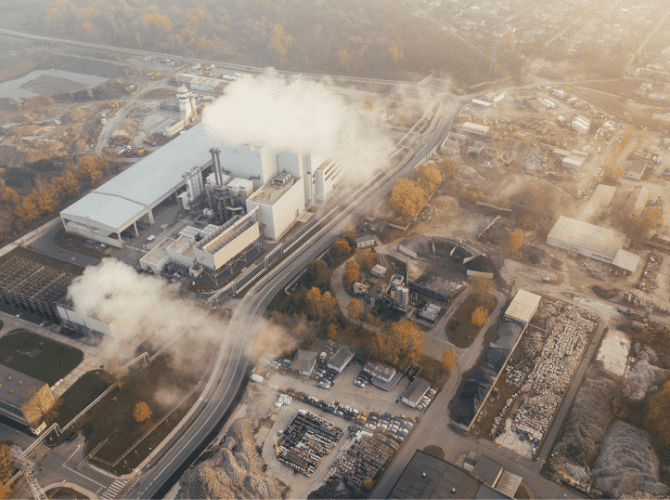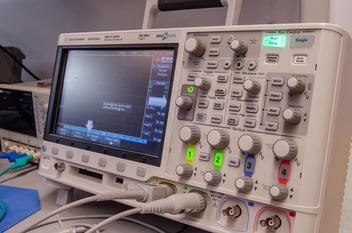In my last blog on ClimateTech Innovation, I discussed the overall drive towards decarbonization – not just the introduction of low- or zero-carbon emitting technologies, but also efforts to capture and remove carbon from existing energy and industrial operations.
Before even thinking about decarbonization, companies need to know how much carbon their business operation generates. Does that company understand what the carbon footprint of its products is? Does that company understand the impact of its full value chain? How trustworthy are the numbers it gets from supply chain partners? Just knowing which numbers and getting them right is a huge challenge. Like standardized financial accounting, we need carbon accounting as the first step in our journey toward decarbonization. Otherwise, all decarbonization pledges become meaningless.
In this post, I dig deeper into carbon accounting principles and initiatives to remove carbon.
Carbon accounting
We can only hold companies accountable for their climate commitments if we put a strong focus on carbon accounting. Defining what and how to measure is a task for both regulators and corporations. Without any clear, accurate, and standard system for carbon accounting- all great pledges for climate action are worthless. GreenBizz states, “both carbon accounting and climate accountability are two sides of the same coin: once corporations set a goal, they want to be held accountable.”
Governments use the Intergovernmental Panel on Climate Change (IPCC) methodology to estimate their carbon emissions and removals. However, corporations don’t have one standard, yet. General corporations have a good idea of the emissions they directly produce (so-called scope 1 emissions), but getting the emissions produced by their supply chain partners and users of their products (scope 3) is more challenging. Definition, accessibility, reliability, and consistency of numbers are across the board. Once there is agreement on the former (read a standard) then one can set targets and track progress against these targets, and bring in relevant auditing just as is done with financial accounting. Such transparency will hopefully create trust and avoid greenwashing.
Stakeholders will all have better visibility – understand where we stand as a society as a whole, what our common goal is, how to get there, what the role of each stakeholder is, and what is feasible with the resources each stakeholder has. A great example is the Microsoft Carbon Call initiative aiming to improve carbon accounting, collectively.
Today’s Environment, Social, Governance (ESG) reporting is basically à la carte – reporting is done on what each company thinks works well (and don’t we all want to share only the good news and keep the bad news to ourselves?). The good news is that the SEC recently announced a proposal for regulation on the topic. Under these new rules, companies will have to disclose their emissions, including hard-to-measure data from their suppliers and customers, and therefore report risks to their businesses from climate change.
The proposal will result in much debate – the SEC was struggling to determine how much detail to seek from companies on their greenhouse-gas output. At issue were the Scope 3 emissions and how to handle that information, which has held up the timing of the agency’s new climate-reporting rules. Up until now, many companies provided details on climate risks when disclosing information they deemed material, but investors often found it hard to make comparisons.
Once standards are set, respective auditing can be done as is the case for financial reporting as well as any relevant risk reporting. That is something investors and other stakeholders need, as long as they can compare the rating with others. ESG will eventually dictate the next iteration of the relationship between companies, government, and investors.

Carbon capture, utilization, and storage
Assuming we have a good grasp on the carbon footprint by product, company, and industry, what can stakeholders do to support decarbonization efforts? First and foremost, we should ramp up conservation efforts. We all love trees and oceans but are not doing enough nor should this overshadow other actions that have greater potential.
The use of renewable energy and greater energy efficiency of current industrial processes are the obvious enablers for decarbonization efforts of manufacturing and heavy industries. Energy efficiency is all about using less energy to perform the same task, hence reducing emissions, and lowering costs in the process. Renewable resources could also serve as raw materials for products with a lower carbon footprint and could be instrumental to close the carbon loop in the context of value chain circularity. In the frame of mHUB’s accelerator on Climate and EnergyTech, I have been talking to numerous startups in the field. The good news is there is a fantastic amount of work ongoing on high-potential and promising technologies in the broader renewables field.
We still need those heavy industry emitters to be compensated for by carbon capture, utilization, and storage (CCUS) technologies that remove carbon from the atmosphere. According to IEA, there is an unprecedented momentum for CCUS, with plans for more than 100 new facilities announced in 2021. That sounds encouraging, however, the scale of CCUS in the world remains tiny: the total volume of CO2 captured over all of 2020 adds up to less than half a week’s worth of the world’s CO2 emissions. But the IEA, among others, considers the development of CCUS vital for decarbonization. Can government increase the support of such efforts and can the quality of the decarbonization technologies catch up?
Another criticism of carbon capture approaches is the massive amount of energy they need. Some estimates claim that it could require five times the world’s energy consumption in 2020. We won’t really know until some of the biggest plants are up and running at scale. Needless to say, alternative technologies that could mitigate that amount will be getting more attention.
The bigger question is what to do with that captured carbon. While carbon capture facilities are expensive and energy-intensive to run, transporting carbon to a storage site is a logistical and regulatory nightmare that few businesses are willing to pay for. Previous projects have failed to live up to expectations. Instead of storing carbon in a dried-up oil field, we can inject carbon into byproducts we use every day. But right now, despite a few promising options like injecting it into concrete, there simply isn’t enough demand for the carbon we are creating.
Carbon tax, carbon credit, and carbon offset
Carbon capture, utilization, and storage business come at a cost. Hence, we will need incentives to do so – enter carbon tax and carbon credits.
Carbon taxes set a direct price on carbon as they establish a tax rate on greenhouse gas emissions. A carbon credit is a permit that allows the owner to emit a certain amount of carbon dioxide or other greenhouse gases. Companies looking to offset their own greenhouse gas emissions can buy those credits through a middleman or those directly capturing the carbon.

A carbon offset, on the other hand, is a reduction of carbon dioxide emissions and results in the generation of a carbon credit. Carbon offsets represent the production of a certain amount of sustainable energy to counterbalance the use of fossil fuels. Carbon offsets generate reductions mostly outside the company (e.g., building a wind farm). Corporations can contribute to growing the market of voluntary buyers for carbon removal credits. It is likely that a large buyer market will need to be regulated into existence through public legislation akin to a carbon tax to avoid an imbalance in supply and demand in the coming years. However, current net-zero pledges rely too much on offsets and not enough on reducing emissions.
A time horizon of 2050 isn’t meaningful in terms of holding companies and their leaders accountable. Many organizations don’t really know how to achieve that goal — and continue to kick the can to the leaders of tomorrow. We are, however, on a good path. In addition to the discussed SEC proposal, the Science Based Targets Initiative this year set a standard for net-zero to which more than 1,000 companies have committed. Companies are putting out fewer PR pitches about net-zero and moving towards actions. Entrepreneurs and startups are banking on new technologies in the emission reduction and carbon capture space that I will discuss in an upcoming blog post.
###
Interested in engaging with the mHUB Accelerator as an industry partner? Complete the form below to express interest.
Thierry Van Landegem leads the Climate & Energy Tech as well as the Smart Manufacturing & Industrial IoT cohort of the mHUB Accelerator, a program that fast-tracks hardtech startups on their journey to becoming scalable, profitable, and sustainable businesses. He is responsible for startup sourcing and evaluation, as well as program development and execution. Thierry brings over 25 years of innovation leadership with a focus on creating sustainable business impact. He has extensive venture building and startup incubation experience in the telecom, internet, automotive, energy and manufacturing industries launching new corporate product lines, incubations, ventures and startups.






